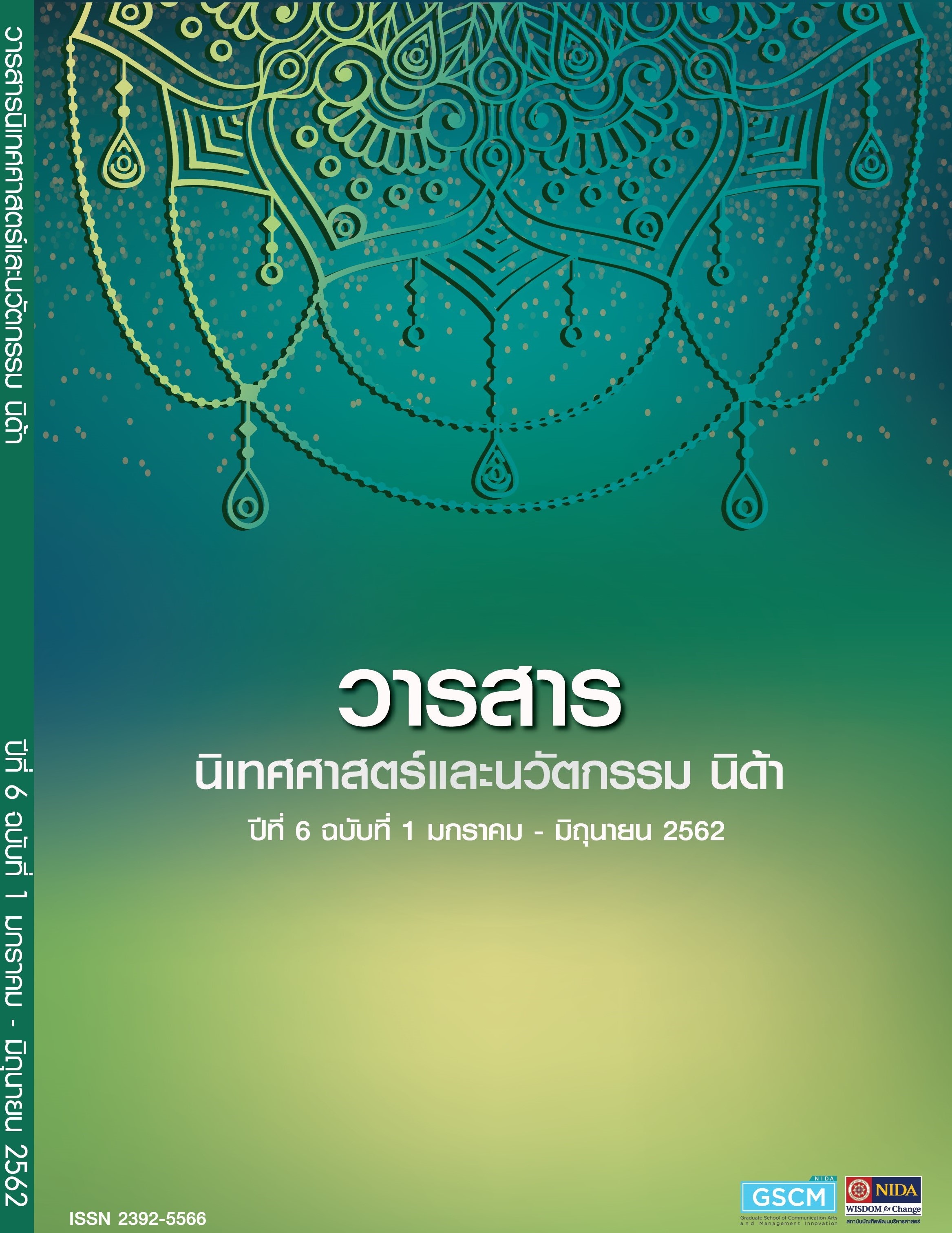Social Media Addiction Behavior, Social Media Imitation Behavior and the Mental Health of Private University Students in Bangkok Metropolitan Region
Main Article Content
Abstract
This study aims to explore the model of relationship social media addiction behavior, social media imitation behavior and teenagers’ mental health in order to learn about the direct and indirect influences of such factors on teenagers’ mental health. This study is a quantitative research.
The samples are 311 undergraduate students from private universities in Bangkok Metropolitan Region. The research tool is a self-rating questionnaire which consists of four parts, i.e., 1) personal information; 2) information about social media addiction behavior; 3) social media imitation behavior and 4) a mental health screening form. The data analysis has been carried out by the methods of descriptive statistics and structural equation modeling (SEM).
The results demonstrated that the structural equation modeling which had been adjusted corresponded to the empirical data, and that the index of item-objective congruence (IOC) fell within the acceptable range. It was discovered that the social media addiction and imitation behaviors had an influence on the samples’ mental health. Thus, related agencies should realize the importance of social media usage which can have an impact on teenagers’ mental health.
Article Details
ข้อความและความเห็นในวารสารนิเทศศาสตร์และนวัตกรรม นิด้า เป็นของผู้เขียนแต่ละท่าน มิใช่ของคณะนิเทศศาสตร์และนวัตกรรมการจัดการ สถาบันบัณฑิตพัฒนบริหารศาสตร์
References
ชมรมจิตแพทย์เด็กและวัยรุ่นแห่งประเทศไทย. (2554). อิทธิพลของสื่อต่อวัยรุ่นไทย. [online]. Available : http:// www.rcpsycht.org/cap/book03_14.php .
ชิดชนก ผิวงาม. (2007). ความคิดเห็นของวัยรุ่นต่ออิทธิพลของการนำเสนอภาพแฟชั่นในนิตยสารวัยรุ่นที่ทำให้เกิดพฤติกรรมเลียนแบบการแต่งกายวารสารศาสตรมหาบัณฑิต (การจัดการการสื่อสารภาครัฐและเอกชน) สาขาการจัดการการสื่อสารภาครัฐและเอกชน คณะวารสารศาสตร์และสื่อสารมวลชน มหาวิทยาลัยธรรมศาสตร์.
ชิตาภา สุขพลำ. (2548). การสื่อสารระหว่างบุคคล. กรุงเทพฯ: โอเดียนสโตร์
ดวงใจ วัฒนสินธุ์. (2559). การป้องกันภาวะซึมเศร้าในวัยรุ่น: จากหลักฐานเชิงประจักษ์สู่การปฏิบัติ Prevention of Adolescent Depression: From Evidence to Practice. วารสารคณะพยาบาลศาสตร์ มหาวิทยาลัยบูรพา,24(1), 1-12.
ณัฐวุฒิ อรินทร์. ( 2558). สภาวะปัญหาสุขภาพจิต และทัศนคติต่อการขอรับความช่วยเหลือทางด้านจิตใจจากนักวิชาชีพสุขภาพจิตของนักศึกษามหาวิทยาลัย. วารสาร จิตวิทยาคลินิก46(1).
ผลวิจัยชี้ 'อินสตาแกรม' บั่นทอนจิตวัยรุ่นมากสุด. กรุงเทพธุรกิจ มีเดีย จำกัด (19 พฤษภาคม 2560). Available: http://www.bangkokbiznews.com/news/detail/755632
พิชิต วิจิตรบุญยรักษ์. (2561). สื่อสังคมออนไลน์: สื่อแห่งอนาคต Social Media: Future Media. [Online]. Available : https: //www.bu.ac.th/ knowledgecenter/ executive_journal/ oct_dec_11/pdf/ aw016. Pdf.
เยาวชนไทยกับสื่อออนไลน์ รู้เท่าทันก่อนสายเกินไป. (2557) สยามรัฐสัปดาห์วิจารณ์ (4 เมษายน พ.ศ. 2557) Available: http://icgp.thaissf.org.
สุวัฒน์ มหัตนิรันดร์กุล, วนิดา พุ่มไพศาลชัย และพิมพ์มาศ ตาปัญญา. (2541). การสร้างแบบวัดความเครียดสวนปรุง. วารสารสวนปรุง, 13, (3).
หนังสือพิมพ์กรุงเทพธุรกิจ. (2553). หวั่นวัยรุ่นเลียนแบบพฤติกรรม(วันที่ 09 ธันวาคม 2553). [Online]. Available: http://www.thaihealth.or.th
อภิชัย มงคล และคณะ. (2552). ดัชนี้ชี้วัดความสุขคนไทยฉบับสั้นหรือดัชนีชี้วัดสุขภาพจิตคนไทย (Thai Mental Health Indicator TMHI-15: ฉบับใหม่). รายงานการวิจัย.
อภิชัย มงคลและวัชนี หัตถพนม. (2545). ดัชนีวัดสุขภาพจิตคนไทย Thai Mental Health Indicators (TMHI – 66) โครงการจัดทําโปรแกรมสําเร็จรูปในการสํารวจสุขภาพจิตในพื้นที่ปีพ.ศ.2545. กรมสุขภาพจิต กระทรวงสาธารณสุข.
Boon, S. D., & Lomore, C. D. (2001). Admirer‐celebrity relationships among young adults. Human Communication Research, 27(3), 432-465.
Dube, Dabi-Elle. “Internet, social media addiction linked to mental health risks: study.” Health. Global News, 9 Sept. 2016. Web. 20 Jan. 2017.Available: http:// globalnews.ca/news/2948555/internet-social-media-addiction-linked-to-mental-health-risks-study.
Ekaterina, G. S. , Anvar, N. K., Daria, P. K.,( 2017). Internet-Addiction of Adolescents: Diagnostic Problems and Pedagogical Prevention in the Educational Environment. EURASIA J. Math., Sci Tech,13(8), 5261–5271.DOI: https://doi.org/10.12973/eurasia.2017.01001a.
Hair, J., Black, W. C., Babin, B. J., & Anderson, R. E. (2010). Multivariate data analysis (7th ed.). Upper saddle River, New Jersey: Pearson Education International.
Karl, H. Schlag. (2011). Imitation and Social Learning . Encyclopaedia of the Sciences of Learning.
Schumacker, R. E.,& Lomax, R. G. (2010). A beginner’s guide to structural equation modeling. (3rd Edition). New Jersey: Lawrence Erlbaum Associates.
Valkenburg, P. M., & Peter, J. (2009). Social consequences of the Internet for adolescents: A decade of research. Current Directions in Psychological Science, 18(1), 1-5.
Young KS. (1996). Internet addiction: The emergence of a new clinical disorder. 104th annual meeting of the American Psychological Association; August ,11; Toronto, Canada.


